Michael Kors Evolves With Refresh for Michael Michael Kors and More
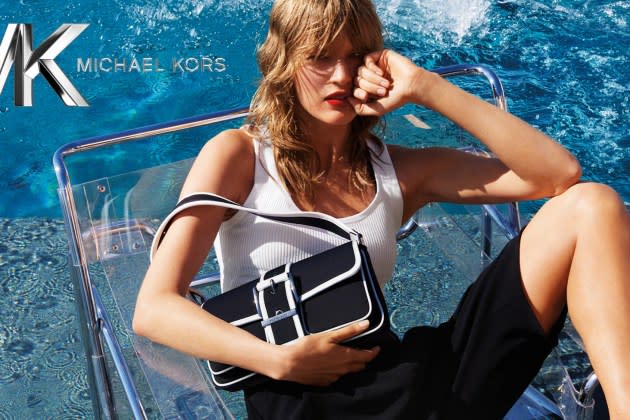
Michael Michael Kors has hit the refresh button.
As the second brand celebrates its 20th anniversary, the company has introduced both an elevated product offering and new creative direction for its spring ad campaign. Ads were photographed by Mert Alas under the creation direction of Trey Laird and were styled by Alex Harrington.
More from WWD
Michael Kors Taps Anne Walsh as President, North America Retail
Michael Kors Renews Eyewear Licensing Agreement With EssilorLuxottica
Michael Kors Wins in Social Engagement During New York Fashion Week
Shot in Malibu and Los Angeles, the campaign features an international cast of models including Africa Garcia, Aivita Muze, Anthony Thomason, Kwaku Ansong, Victoria Fawole and Xu Meen. The models are featured in both still photography and a wide range of video assets.
“I wanted the campaign to personify the personal style of women and men who are cool, confident and always up for adventure,” said Michael Kors. “They effortlessly mix the relaxed and casual with the sleek and chic. They define the spirit of the next-gen jet set.”
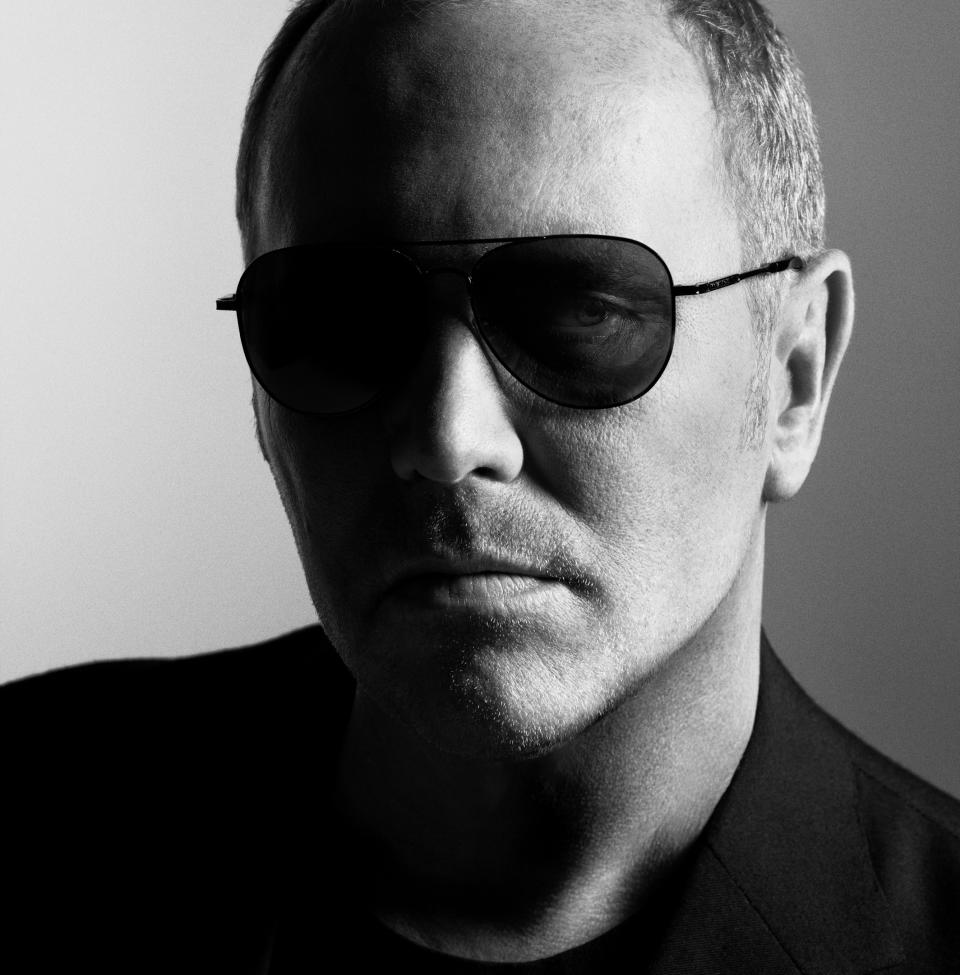
“I’m always thinking about what’s next, and then all of a sudden, the realization hits that it’s our 20th anniversary of Michael Michael Kors,” Kors said in an interview at company headquarters this month. The business is working to evolve as it looks to meet a the next generation of shoppers. The effort also comes as Michael Kors parent company, Capri, prepares to be taken over by Coach owner Tapestry.
“We really wanted to speak to the next gen of jet setters,” Kors said.

When Michael Michael Kors was launched in 2004, Kors said he was going after people who dreamed of the big life, but didn’t have the resources to spend all their money on designer product. The designer customer wanted to fill in her closets with ready-to-wear or shoes and bags, “and not have everything be so precious,” Kors said. “I’ve always dressed that way myself; I think people do mix it up.”
Kors thought hard about what jet set meant to this new generation.
“It’s not about the actual journey. It’s not how they got there. It’s not necessarily the plane ride or the boat ride, it’s the emotion they feel when they are there,” Kors said. “This is a generation that’s grown up on social. They have to model themselves because they are the star of their own life. We wanted it to really reflect that. There’s a looseness to it. It’s also very graphic. There’s a lot of noise in the world, and when you’re really viewing things on mobile, which is a big chunk of it, we needed it to feel like something that could just stop you,” the designer said.
Kors has done collaborations with Laird in the past. “He immediately understood that we were having a revolution that was ultimately an evolution. It’s still about the journey, it’s just enjoying yourself when you’re actually at the location,” he said.
He said they put the focus on the product in an unexpected say, such as the bag floating in the swimming pool, or the shoe shloshed with water. “It’s a little irreverent, not precious,” he said.
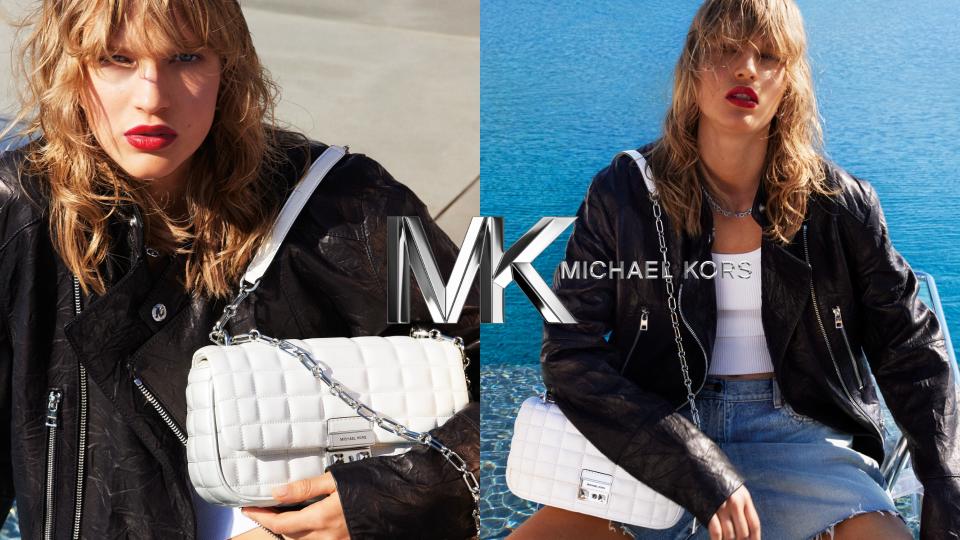
The campaign features a very international group of models from such countries as the U.S., Spain, Estonia and China. “They’re plugged in, they have the same dreams regardless of where they live,” he said.
“When we started initially, we launched Michael Michael Kors strictly in North America. Then it quickly grew to be more global. Social for this generation is the ultimate in global. You can be living in Wyoming and you’re looking to see what’s going on with K-pop. And the K-pop performer is dying to see what’s happening with Blake Lively,” he said.
When the brand launched, it provided more of a matching head-to-toe moment, but is now more focused on the items themselves.
“Now there’s no rules, boots in the summer, cropped tops in the winter,” said Kors. Since the campaign was shot in California, the brand injected many casual pieces “because that’s life today,” Kors said.
Michael Michael Kors is sold in the brand’s own stores globally and at wholesale partners around the world.
The campaign imagery is sharp, graphic, bold and saturated, focused on sand, sea, water and sky, as well as the brand’s key messages for the season.
In accessories, the focus is on two new shoulder bags — Colby and Tribeca — polished, versatile designs meant to work day and night with metallic accents. Spring shoes range from sandals and slides to chic mules. Zebra is spring’s statement print, splashed across handbags, footwear and ready-to-wear. Sunglasses include shields, rimless ovals and angular acetates.
“It’s really bags and shoes here. There’s very little apparel and ready-to-wear in here, on purpose,” said chief executive officer Cedric Wilmotte. “It’s still about travel but it’s more relevant now. It’s younger, more relevant and I also think it’s more compelling,” Wilmotte said. He said the campaign is more focused on the “hero-ing” of the product, and not a focus on 25 products.
When asked who the Michael Michael Kors customer is these days, Kors explained that it used to be the daughter aspired to be like her mother, but now the mom aspires to be like her daughter. “It’s someone who’s on the go, busy and makes her own rules. A lot of that is seen though the prism of Gen Z. Millennials and post-Millennials are looking at young people to see how they’re putting themselves together.”
In general, the styling is more “undone,” said Kors, who placed an emphasis on sunglasses. “You have a whole generation of people who don’t want to have their picture taken without their sunnies,” he said.
The global campaign will break Tuesday, with print ads running in spring issues worldwide. The images will also appear in digital outlets, as well as social media platforms and traditional outdoor media placement.
For the Michael Kors Collection, the ad campaign was shot — for the first time — in Capri, Italy, by Dutch duo Inez van Lamsweerde and Vinoodh Matadin.
“There was a little bit of a similarity that we were often focused on how you were traveling, rather than actually being there. The campaigns are very different from one another, but they are both about experiencing the moment of travel and actually in the place,” Kors said.
“Everyone knows that I’m inspired by travel and Capri is my Valhalla. It’s nature, it’s glamour, it’s the good life, whether it was Slim Aarons or Jackie Kennedy on the street. I’ve been going for 35 years,” Kors said.
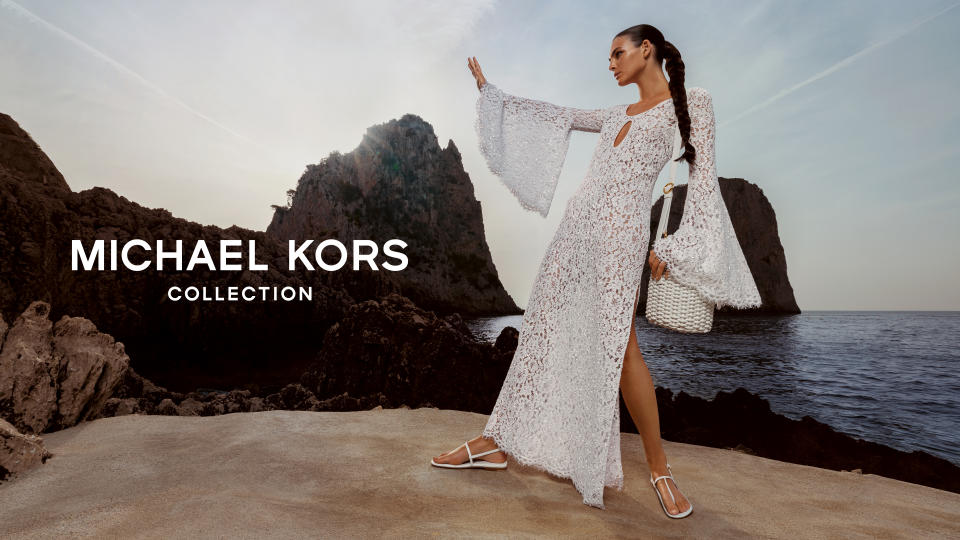
The Collection stars Italian model Vittoria Ceretti as she explores the idyllic island of Capri, with images captured at La Fontelina and a luxe Italian villa along the Via Tragara.
“She’s really experiencing the natural beauty that I think is such a knock-out,” Kors said.
“Spring was focused on the good life and we wanted real drama to these photos,” he said, adding that Ceretti “is great at using her body to really express the clothes.”
“I will say it’s not the easiest place to shoot. There’s a lot of equipment and a lot of people,” said Kors, who was on the shoot. It was styled by Emmanuelle Alt “who certainly understands barefoot glamour,” he added.
The Michael Kors campaign is running outdoor, on social channels and in print. “We just did Times Square with it. Maybe if you haven’t been to Capri, you might not immediately know, but you’ll say, ‘What a dream, where is she?’ That’s the thing with images today, you don’t really know where they are, but you want to be there,” he said.
For spring, Michael Kors Collection looks featured fluid goddess gowns, side-slashed skirts and breezy caftans. There are also Empire dresses and flowing skirts of chiffon and lace worn with sleek bodysuits. In accessories, flat shoes, from sandals to strappy gladiators, add to the air of effortlessness, underscored by an artisanal handwoven bucket bag that nods to the legendary style of Jane Birkin. There’s also a host of ready-to-travel messenger bags, shoulder bags and accessories.
In Collection the ready-to-wear is the larger part of the business, but in Michael Michael Kors, accessories comprise the lion’s share.
Kors plans to introduce a new fragrance called Michael Kors under a license with EuroItalia later this spring, and said he’s “intrigued” by the beauty business. “We’ve done ancillary products that turn into cult products. We did something called Leg Shine,” he said.
“The only thing I’ll say no to is we’ve been asked 25 times over the last 40 years to do airline uniforms. This isn’t clothing, this is armor. You never know. Obviously travel is a big part of my personal life and is a big part of the brand,” Kors said.
Wilmotte, who first joined Michael Kors in 2008 and returned in April after a brief stint as interim CEO of Versace, said the campaigns are part of the company’s strategy to elevate the brand.
“My stepping out of the group to do my own thing and working with Versace, it helped me realize what kind of changes needed to be made at Michael Kors,” Wilmotte said.
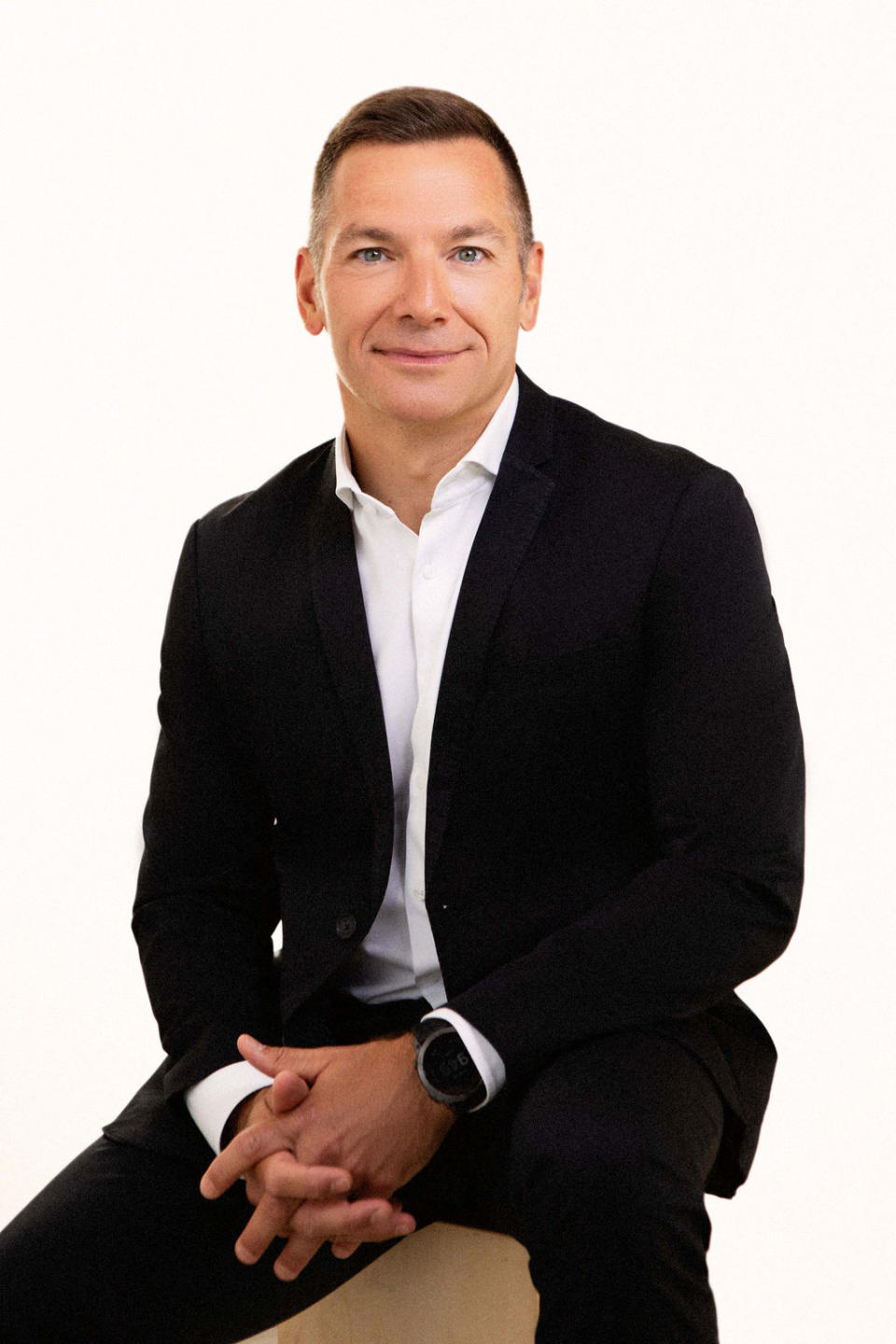
“I also saw the extent of the limitation. If we didn’t do something around the [Michael Michael Kors] brand and really modernize our approach.…I felt we were not going to be successful,” Wilmotte said.
In April, the business worked together with the leadership team, Michael Kors and members of Capri to really help them craft the foundation of their transformation. They brought on board an external company, Landor and Fitch, to help.
“It’s still a work in progress right now. We’re focusing on elevation and differentiation. It’s not about taking all the prices up. It’s really about elevating the perceived value of our brand. And really focusing on reinjecting more emotions in everything we do. Whether it’s the product, the marketing, the social, and again how we operate internally,” Wilmotte said.
He said the Michael Michael Kors brand has been diluted through its evolution, through COVID-19, consumer and technology shifts, as well as expectations of a new generation. The brand is aiming to transform quickly because of the Tapestry deal.
Bags and shoes at Michael Michael Kors are the largest portion of their business, but Wilmotte said he sees “big opportunity” for other product categories. Michael Kors also has a large licensing business with watches, jewelry and sunglasses.
From a product perspective, it’s really about rebalancing the offer. “It’s about leaning into our expertise in bags and shoes and expanding novelty and newness. We have opportunities around limited editions, more capsules, and more collaborations going forward,” he said, declining to go into the details.
He said the brand is evaluating everything — product, marketing, innovation and store concept.
Globally, the business is in the process of revamping its 315 lifestyle stores.
Wilmotte declined to discuss current business, but recent third-quarter results show it is challenged, especially at wholesale in North America. Michael Kors sales declined 5.6 percent year-over-year in the latest quarter, to just over $1 billion.
The decline was primarily attributable to a softening consumer demand in the Americas, as well as e-commerce issues that have been mostly resolved, the company said. Retail sales declined in the midsingle digits, while wholesale revenue decreased in the low-double-digits for the quarter.
“We had a few hiccups last year and we replatformed,” Wilmotte said. “More than ever, we have to invest in our omnichannel capabilities, and we see great opportunities with the merger with Tapestry because they do have expertise in omnichannel.”
Wilmotte said the business will continue leaning in with accessories. “There’s definitely an opportunity to double down on apparel and men’s and we see jewelry as a big opportunity. Watches [Michael Michael Kors] is a challenging environment right now for everyone in that price point. Eyewear and sunglasses is a great opportunity for us to continue engaging with that younger customer.”
Wilmotte said Asia is a big focus for the company, and another area where Tapestry may be able to help.
The business plans to open a Rodeo Drive store this spring, replacing a prior location in Los Angeles. Opening more stores in the U.S. is under evaluation.
“We are going through what we like to call a radical evolution, it’s not a revolution. There are a lot of things we need to lean on. Usually a revolution, you throw everything out. We’re reconnecting with the customer in a compelling and relevant way,” he said.
“It was time for an evolution. It was time to do things differently. Because there was repetitiveness in what we were doing — it’s time to go to our roots of being a designer brand and lean on the authority of Michael,” Wilmotte said. “If you look at some of our competitors, not a lot of them can claim that the name on the door is still very much involved in the business and driving the business and the excitement. Michael is energized like a 25-year-old. He has tons of energy and his vision is amazing,” Wilmotte said.
Best of WWD
